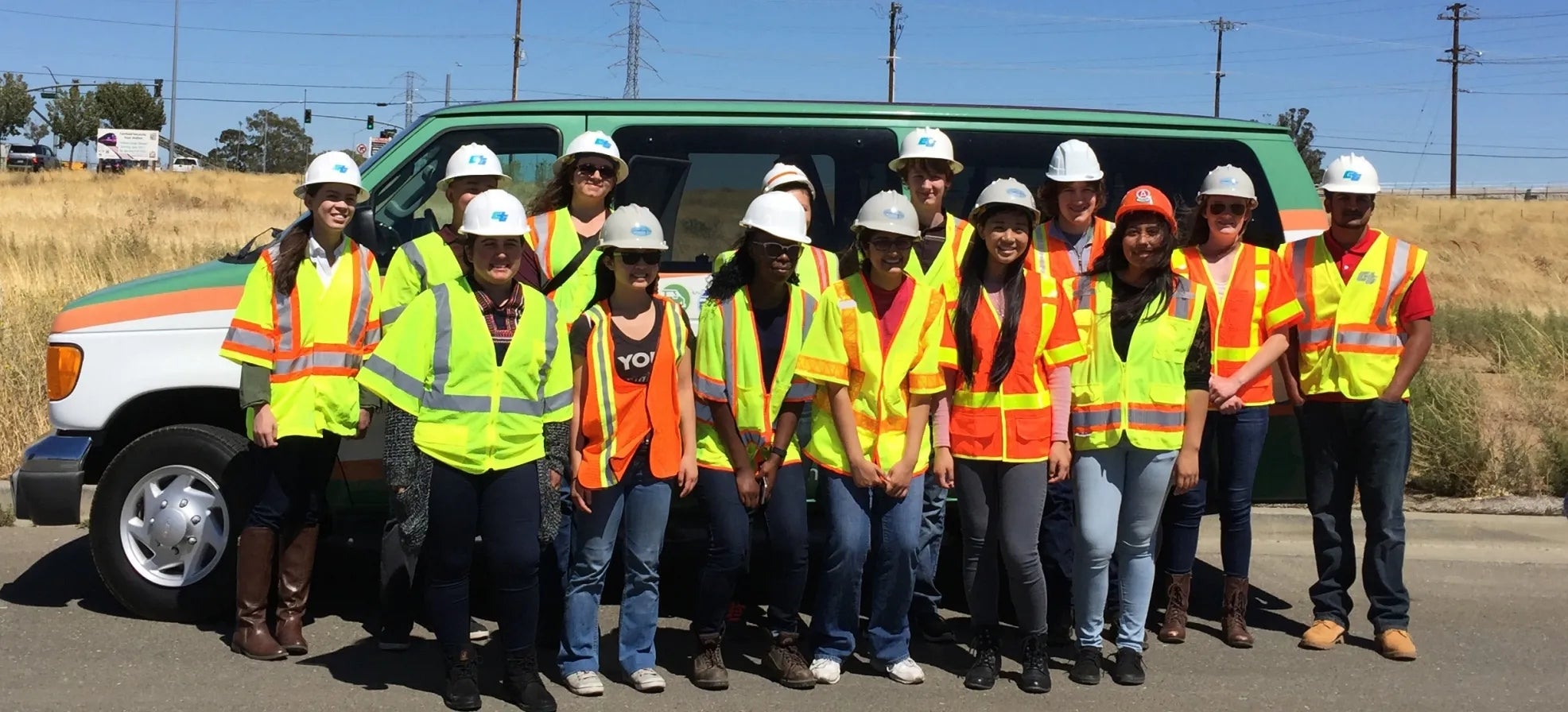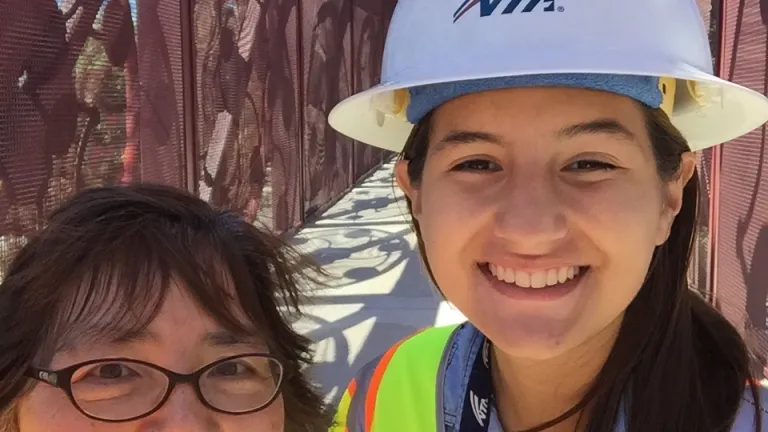
We reached out to the high school interns over the summer, and many wrote back to tell us in their own words about their experiences. Here are some of the stories from the East Bay.
Raquel Crites interned for Bay Area Rapid Transit (BART) in Oakland for the summer. She told us that she appreciated “the opportunity to write web articles that were interesting to me and important to the public. Learning how to research, interview, gather information and compile it with the guidance of my mentor/editor has really developed my personal communication skills. I think my position was very meaningful, because I get to form a bridge between the general public and a government agency that prides itself on being transparent, so I was a part of that transparency through my writing,” she said. Crites added, “I really appreciated the chance to learn about BART’s sustainability efforts and environmentalism related to the transit system.” Crites’s mentor Melissa Jordan, a senior marketing and communications representative for BART, agreed, adding that she hopes Raquel learned “about the breadth and depth of what goes on in a public transportation agency such as BART, and how to communicate it in a way that generates interest and educates the public about why public transit is so important. I also hope she learned how to navigate a large bureaucracy and be confident in her skills as she moves forward in her education and career paths.”
Also in Oakland, Divyaa Venkatachalam spent the summer interning for the Alameda County Transportation Commission (ACTC). Though she still has one more year of high school to complete, Venkatachalam told us that “this internship has really shown me what life is like after school.” Among the professional skills she learned, she said, “this internship definitely taught me that I need to be able to balance my time. As an intern, I wasn’t part of any specific department. This meant that I had a few assignments from different people. I had to be able to prioritize certain tasks and keep track of all the deadlines. It gave me a scope of what it really takes to run a business. I also spent plenty of my time making spreadsheets and gathering data from different sources for the planning department. I also got to do some research on new innovations in the technology sector with regards to new improvements in vehicles and roads. In addition, the ACTC also runs the Interstate 580 Express Lanes. Sometimes, I got to observe these lanes from their control room. Throughout this summer, I really did get to do a variety of activities.”
Other students from Alameda County in the program included Flore Mountsambote, who worked for the city of San Leandro; Prats Mathur, who interned for Caltrans; and Sneh Girdhar, who was employed by the city of Hayward. Mountsambote’s duties included “entering collision data, measuring the city’s bike lanes, going out into the field and observing how work orders are prepared, and doing speed and intersection surveys.” She added, “My long term goal as of now is to become a city planner and work full time with MTC or a local government office.” Mathur and Girdhar both enjoyed the wide variety of tasks they worked on, including learning AutoCAD and field work, and said that they were treated like professional employees, not just high school students.
In Contra Costa County, Ethan Christensen and Brice Halder worked together in the Engineering Department of the city of Orinda. “The most enjoyable activity on the job was our visits to the construction sites,” said Christensen. “At the North Lane Storm Drain Project, the 28-foot bore pit will leave a lasting impression on me. At one point, the excavators couldn’t reach deep enough into the pit, so the crew lowered a second excavator into the pit in order to dig deeper. It was incredible to watch and think about the materials and science used to complete a project. The field visits helped me to better understand the diverse job opportunities for engineers.” Halder added, “Observing and listening to all of the engineers, contractors, construction workers, etc. were the most enjoyable parts of the internship for me. When they were all conversing with each other in the field or in meetings, the jargon could get quite confusing at times. However, they always clarified and explained to me what they were talking about, which was a great learning experience for me.. Halder described some of his duties as “documenting the latitudes, longitudes, and descriptions of various lampposts to enter them into a database. I got the chance to use ArcGIS to update some locations for another future project, which was an interesting experience.” Both students plan to attend college and major in engineering this fall.
In San Pablo, Maneek Dhillon spent his summer working for the city government, while further east, Sarah Mondloch also worked in local government for the town of Danville. Their mentors wrote to us with positive words about their interns and the MTC program. Ronalyn Nonato, assistant engineer at the city of San Pablo, told us that she wanted Dhillon “to see the importance of connecting all the background research, studies and design in preparation for the actual real world construction...We hope to teach Maneek that there are a lot of science behind a typical sidewalk, curb or gutter....We want him to know that coordination plays an important part in our industry. We want him to work with us as a team member in a professional setting. Also, we want him to take ownership of projects, be conscious of deadlines, plan ahead to meet those deadlines and follow through with colleagues.”
“I hope to teach Sarah Mondloch about transportation planning, engineering, and GIS fundamentals,” explained Thomas Valdriz, program analyst for Danville, in an email from July. “Sarah is a quick learner and I encourage her to ask questions in order to learn as much as she can during her time here.” Mondloch worked on drafting articles for a transportation newsletter, creating service requests for the installation of parking signage, editing and proofreading documents, creating maps using ESRI ArcGIS, updating websites with WordPress, watching webinars related to bicycle and pedestrian safety and traffic calming, and attending important meetings.”

